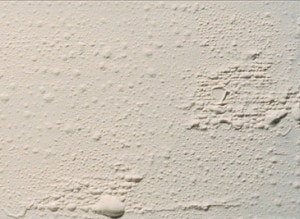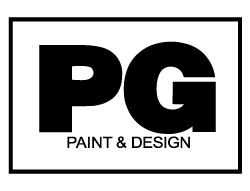There’s nothing worse than working hard at an interior or exterior painting project only to notice the paint has started to blister.
Paint blistering also referred to as paint bubbles can be caused by a several different factors like inadequate prepping of the interior or exterior surface, high levels of humidity or moisture, working in extreme heat on the outside, and insufficient dry time between coats of paint.
 Although paint problems are common whether it is a DIY painting project or if you have hired a professional painting company they can be prevented and fixed. Here’s a breakdown on paint blistering how to prevent it and how to fix it.
Although paint problems are common whether it is a DIY painting project or if you have hired a professional painting company they can be prevented and fixed. Here’s a breakdown on paint blistering how to prevent it and how to fix it.
What Are Paint Blisters
Paint blistering is when the paint separates from the surface where the paint was applied. It is typically caused by extreme heat, moisture, humidity or combination of all.
Paint blisters or bubbles can happen when the improper or inadequate prep of the surface is omitted. Failure to prepare any interior drywall surface or any exterior surface properly may create paint blisters also known as paint bubbles.
What Causes Paint to Blister or Bubble
Paint blistering occurs because of excess moisture and humidity on both the inside or outside of your home.
Interior moisture levels in kitchens and bathrooms are common causes for paint blisters to form, while on the exterior moisture levels can be caused from exposed and untreated wood surfaces which allow rain, melted ice or snow to accumulate and create these paint bubbles or blisters.
It is not recommended to do exterior painting in extreme heat as this can cause failure of the paint to properly adhere to the surface and lead to blistering or bubbling, which will lead to peeling or cracking paint issues.
How To Prevent Paint Blistering
To avoid and prevent paint from blistering or bubbling before painting go through the following tips.
For Exterior Painting – Ensure all seals and gaps are filled with water-resistant caulking, ensure you use the best paint primer that is specially formulated for exterior painting before any final paint colour or stain.
Avoid painting in extreme heat and humidity or after rainfall. Exterior surfaces should be completely dry from any rain for at minimum 2 days before any painting or staining.
It is also not recommended to paint any exterior surface to early in the day where there is a greater chance of condensation, resulting in non-adherence of paint. It is typically good to paint outside spaces after 8 am and before 2pm.
For Interior Painting – Make sure all the necessary prepping of drywall surfaces is done first and foremost. Fill any nail pops, holes or gaps with the appropriate drywall compound mix, then make sure to thoroughly sand and prime before painting any paint colours.
How To Fix Paint Blisters
Paint blisters or bubbles on exterior surfaces are typically caused by heat, moisture and humidity. If you have this issue with any recently painted surface here is what you can do to fix it.
For Interior Surfaces
- Ensure the room or area has good and adequate ventilation to prevent the buildup of moisture problems like in kitchens, bathrooms and basements. Installation of fans that vent to the outside or leaving a window slightly open are easy solutions to preventing the moisture buildup.
- Remove blistered paint bubbles by either scraping or sanding the surface
- Use a good-quality paint primer
- Repaint the space with high quality paint products and appropriate paint finish
For Exterior Surfaces
- Remove any blister or bubble by scraping, sanding or using a power washer
- Use a good quality exterior paint
- Paint at the right time of day, right temperature when it’s not extremely hot and humid and not under -10 degree celcius. Make sure the exterior wood surfaces are dry from any moisture for at least 2 to 3 days
These tips can be useful to help you prevent paint blisters or bubbles from happening with your next painting project or you can leave it up to the professional painters near you to avoid the worries and eliminate any guesswork.
